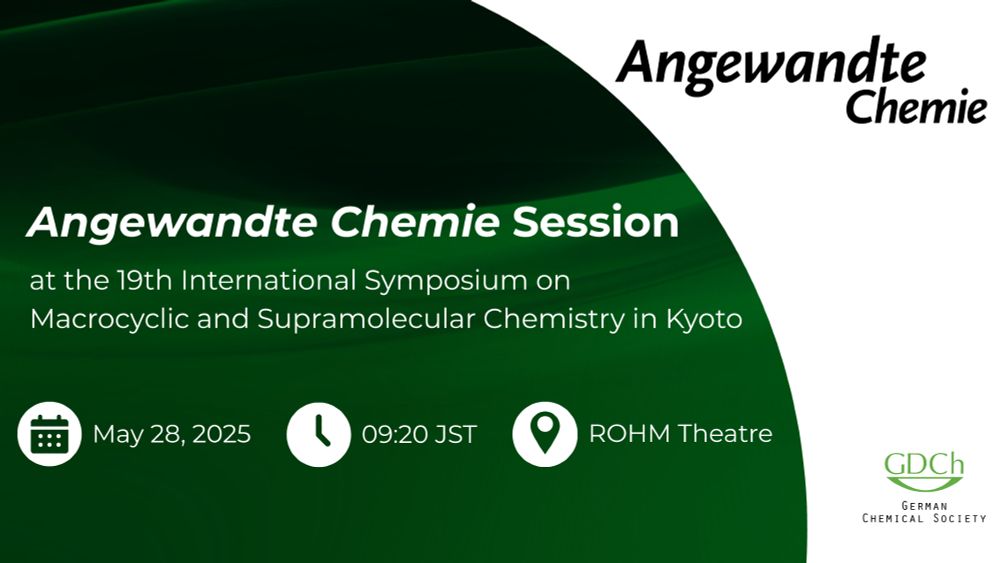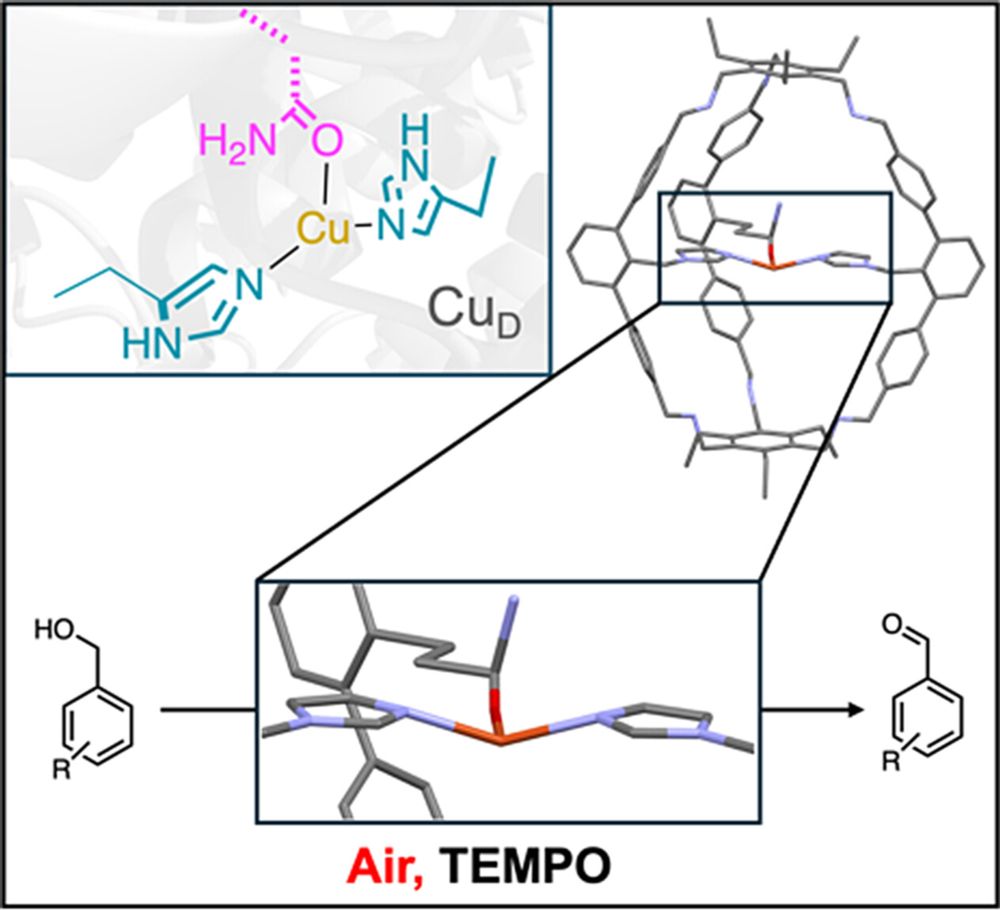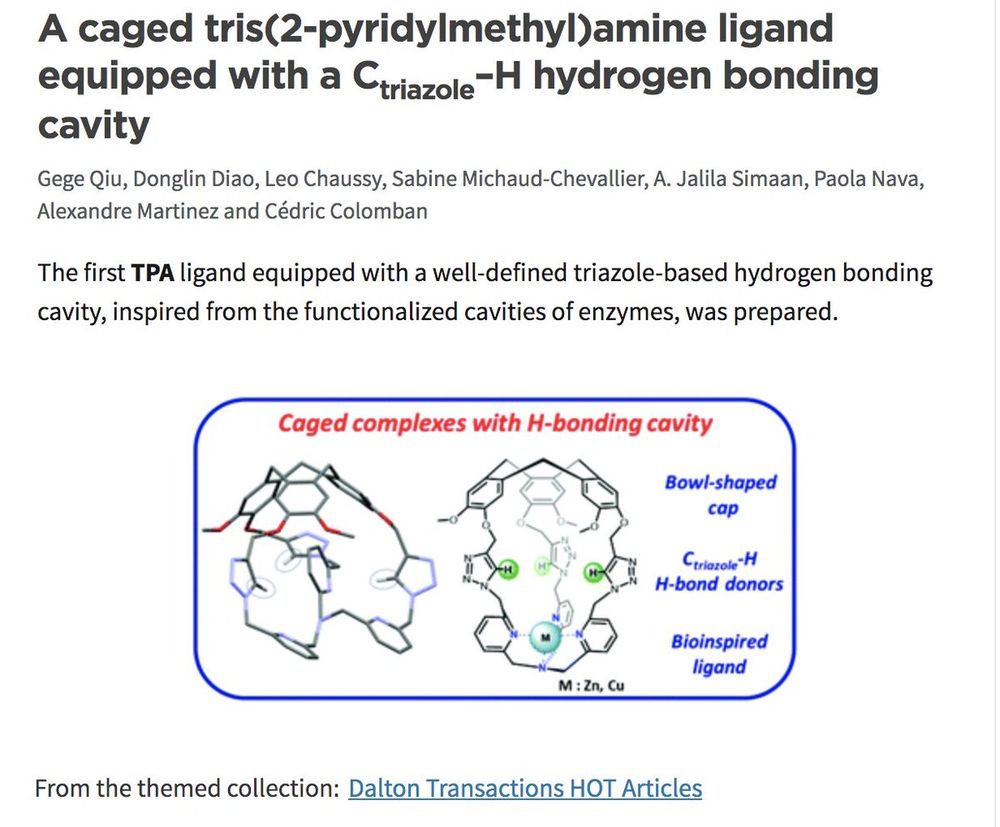
Bioinspired Confined Catalysts
https://ism2.univ-amu.fr/fr/annuaire/colomban-cedric

Congrats to Donglin, Anna and all co-authors !
pubs.acs.org/doi/10.1021/ja






emploi.cnrs.fr/Offres/Docto...
emploi.cnrs.fr/Offres/Docto...
emploi.cnrs.fr/Offres/Docto...
emploi.cnrs.fr/Offres/Docto...
@dcc-scf.bsky.social @frenchbic.bsky.social
chemistry-europe.onlinelibrary.wiley.com/doi/10.1002/...

@dcc-scf.bsky.social @frenchbic.bsky.social
chemistry-europe.onlinelibrary.wiley.com/doi/10.1002/...
N'hésitez pas à me contacter si vous avez des questions ! Pour postuler, c'est ici :(1/2)
N'hésitez pas à me contacter si vous avez des questions ! Pour postuler, c'est ici :(1/2)
Congrats to Donglin, Anna and all co-authors !
pubs.acs.org/doi/10.1021/ja

Congrats to Donglin, Anna and all co-authors !
pubs.acs.org/doi/10.1021/ja
that receives an award for best poster at the 2024 EuChemS conference on Nitrogen Ligands in Cassis @EuChemS
! Well done Anna 👏!

that receives an award for best poster at the 2024 EuChemS conference on Nitrogen Ligands in Cassis @EuChemS
! Well done Anna 👏!
that receives an award for best oral presentation @FrenchBIC_CNRS
annual meeting ! May congrats Anna and to all award recipients: frenchbic.cnrs.fr/2024/04/26/o...

that receives an award for best oral presentation @FrenchBIC_CNRS
annual meeting ! May congrats Anna and to all award recipients: frenchbic.cnrs.fr/2024/04/26/o...
@HureauLab
@marinedem7
@SebastienGoeb
and G. Canard for the very interresting discussions !

@HureauLab
@marinedem7
@SebastienGoeb
and G. Canard for the very interresting discussions !
as an 2023 Emerging Investigator !
Have a look at our Featured Article on Confined Bioinspired Complexes. Thanks Donglin, Alexandre and Jalila
.
pubs.rsc.org/en/content/art

as an 2023 Emerging Investigator !
Have a look at our Featured Article on Confined Bioinspired Complexes. Thanks Donglin, Alexandre and Jalila
.
pubs.rsc.org/en/content/art
for the invitation to be part of the
"New Talent : Europe 2022" issue which is now online 🙂!
@ism2_fr @INC_CNRS
Check out some nice european inorganic chemistry studies at:
pubs.rsc.org/en/journals/ar…
for the invitation to be part of the
"New Talent : Europe 2022" issue which is now online 🙂!
@ism2_fr @INC_CNRS
Check out some nice european inorganic chemistry studies at:
pubs.rsc.org/en/journals/ar…
pubs.rsc.org/en/journals/ar…

pubs.rsc.org/en/journals/ar…
@ism2_fr @INC_CNRS
x.com/ChemCommun/sta…
@ism2_fr @INC_CNRS
x.com/ChemCommun/sta…
A caged TBTA ligand that allow for CuAAC reactions in the presence of bulky Cu(I)-chelators @ism2_fr
@INC_CNRS
pubs.rsc.org/en/content/art…

A caged TBTA ligand that allow for CuAAC reactions in the presence of bulky Cu(I)-chelators @ism2_fr
@INC_CNRS
pubs.rsc.org/en/content/art…
@ism2_fr @CentraleMars
frontiersin.org/articles/10.33…
@ism2_fr @CentraleMars
frontiersin.org/articles/10.33…
Also check the interresting videos in the SI !
A combinaison of NMR, MD and aMD methodologies as a predictive tool to better understand host-guest interactions.
pubs.acs.org/doi/10.1021/ja…

Also check the interresting videos in the SI !
A combinaison of NMR, MD and aMD methodologies as a predictive tool to better understand host-guest interactions.
pubs.acs.org/doi/10.1021/ja…
The design of a tris-urea covalent cage with restricted inner space, allow for an exclusive selectivity for F- over other halides @ism2_fr @CentraleMars
pubs.acs.org/doi/abs/10.102…

The design of a tris-urea covalent cage with restricted inner space, allow for an exclusive selectivity for F- over other halides @ism2_fr @CentraleMars
pubs.acs.org/doi/abs/10.102…
Chirality transfer in a cage can controls the propeller arrangement of the TPA ligand and Cu-complex. @ism2_fr
pubs.rsc.org/en/content/art…

Chirality transfer in a cage can controls the propeller arrangement of the TPA ligand and Cu-complex. @ism2_fr
pubs.rsc.org/en/content/art…
onlinelibrary.wiley.com/doi/abs/10.100…

onlinelibrary.wiley.com/doi/abs/10.100…
pubs.acs.org/doi/10.1021/ac…
pubs.acs.org/doi/10.1021/ac…
thieme-connect.com/products/ejour…
thieme-connect.com/products/ejour…

